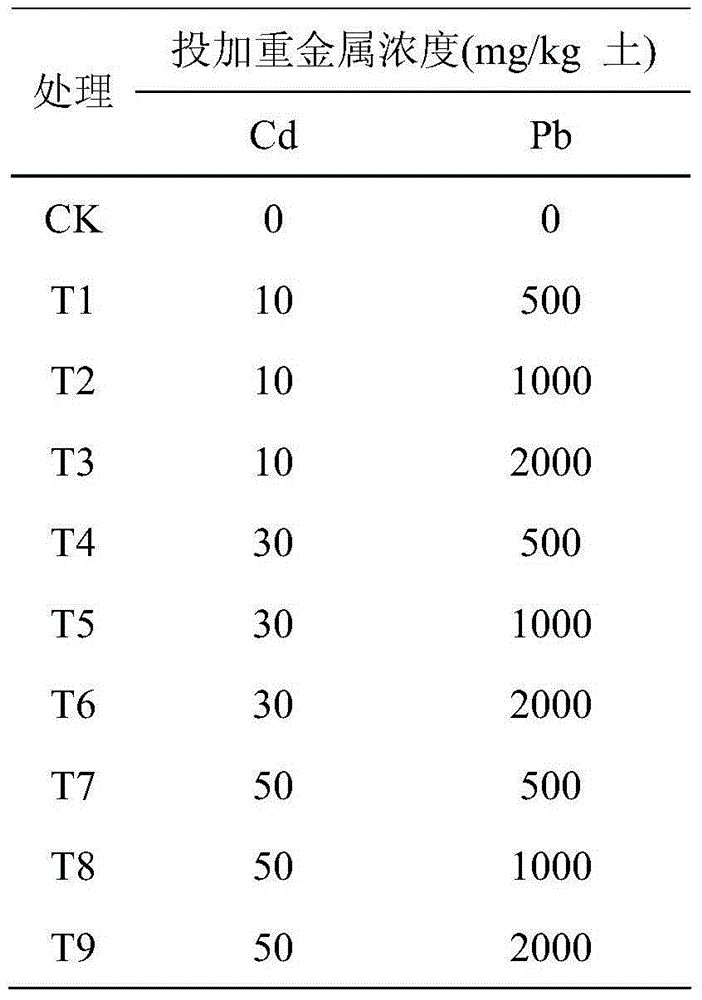Reinforced plant restoration method for lead-cadmium composite contaminated soil
A technology for compound pollution and phytoremediation, applied in the field of using dissolved organic matter to enhance phytoremediation of soil lead and cadmium, can solve the problems of affecting phytoremediation effect, difficult degradation of chelating agents, and reducing plant biomass, etc., so as to improve bioavailability. , strong practical application potential, obvious effect of strengthening effect
- Summary
- Abstract
- Description
- Claims
- Application Information
AI Technical Summary
Problems solved by technology
Method used
Image
Examples
Embodiment Construction
[0027] The present invention will be further described below in conjunction with the embodiments.
[0028] (1) Potted plant concentration gradient experiment
[0029] The potted planting experiment site was on the campus of Shaanxi University of Science and Technology, and it was cultivated outdoors. There is no pollution source around the experimental site. The area belongs to the warm temperate semi-humid monsoon climate. The annual average temperature is 9-19℃, the frost-free period is 208-230 days, and the annual precipitation is 500-750mm. The pot experiment was collected from the surface soil of the school (0-20cm). ), the basic physical and chemical properties of the soil are shown in Table 1.
[0030] Table 1 Basic physical and chemical properties of soil
[0031]
[0032] A total of 10 concentration gradients were set up in this experiment (Table 2), and the forms of Pb and Cd added in the experiment were Pb(NO 3 ) 2 , CdCl 2 ·2.5H 2 O, is an analytical reagent. Take an app...
PUM
 Login to View More
Login to View More Abstract
Description
Claims
Application Information
 Login to View More
Login to View More - R&D
- Intellectual Property
- Life Sciences
- Materials
- Tech Scout
- Unparalleled Data Quality
- Higher Quality Content
- 60% Fewer Hallucinations
Browse by: Latest US Patents, China's latest patents, Technical Efficacy Thesaurus, Application Domain, Technology Topic, Popular Technical Reports.
© 2025 PatSnap. All rights reserved.Legal|Privacy policy|Modern Slavery Act Transparency Statement|Sitemap|About US| Contact US: help@patsnap.com



